The Essential Guide to Mass Communication: History, Methods, Ethics, and the Future

Many things are said to make the world go around. It is not something often said about mass communication. Still, it is so integral to our lives - and always has been - that it is easy to take the dissemination of information and its associated methods and tools for granted.
Today, we use many information sources to see what is happening around us, locally, nationally, and globally, with more emerging all the time. As technology advances, we require up-to-the-minute information quickly and efficiently. Mass communication aims to meet these needs. However, it is not just a transmitter of messages to a passive audience; it also impacts and is impacted by the audience's culture and shifts of perception within that culture.
Main Topics Quick Links
- What is Mass Communication?
- Types of Mass Communication
- History of Mass Communication
- Mass Communication Theories
- Ethical Issues for Mass Communications
- What Does the Future of Mass Communications Look Like?
What is Mass Communication?
It is defined as broadcasting a message or messages simultaneously to a large audience, typically to people who do not have immediate access to the source (like a government, multinational organization, or a large business with a vast number of people to disseminate a message). It includes the person communicating, the method(s) they use to communicate, the content of the message, and the audience receiving the message.
Mass communication is a subarea of communications studies in the US and social science with some physical science elements - especially when designing systems and technology to transmit messages.
Typically, it is synonymous with broadcast and print media: radio, TV, film (small and large screen), print media, and advertising. However, with the advent of the internet in the 1990s, this perception of large organizations communicating to mass audiences has shifted. Through new media, smaller organizations have more access to mass communication, which is much cheaper than previously.
As these new channels and pathways grow, they bring new paradigms. So far, we've seen the development of targeted advertising, extensive data collection, analytics, and other digital tracking methods for more efficient marketing and information dissemination (called Big Data), all of which have potentially sinister and positive uses.
Further details, including information on other types and new media, are in the section on types of mass communication.
Generally, if a communication system fills these five functions, it is mass media:
- Information: to feed or satisfy curiosity on behalf of an audience who wants to know more about an issue, to provide clarity where there may be confusion, and to help the receiving audience understand how they fit into society. This is most news media
- Interpretation: To interpret information in ways that suit the audience - whether social bias in presentation, comparison to regional or personal experiences, or communicating complex ideas in layman's terms. This includes op-eds and talk radio
- Instruction: This comes in two forms. It covers things like public broadcasting services: National Public Radio, and Public Broadcasting Service. These seek to provide educational content. It can also include Discovery Channel, The History Channel, and National Geographic
- Bonding: This is everything from group chats with the family online during the COVID-19 pandemic, shared experiences of sporting events, or the coming together of people following a tragedy like Hurricane Katrina. The media can unite us, as exemplified in the days after 9/11
- Diversion: Provided almost exclusively by entertainment media (television, movies, music, games), the diversion element helps us wind down, escape from our daily lives, and relax. They distract us from all the chores and stresses though they might also fill some of the other items on this list
For those interested in learning more about a graduate program, please consider our complete list of online master’s in mass communication programs.
Types of Mass Communication
Now that we have defined what mass communication is, it's essential to break down the types that we currently have. Some types of mass media fit into multiple categories with the addition of new technologies in the digital age. They are classified thus:
Printed Media
The history of mass communications below states the written word emerged around 35,000 years ago. The printing press emerged around 600 years ago, but printed media technically existed for thousands of years. Way before newspapers, the Romans and Greeks used scrolls, Egyptians used papyrus, and ancient China used paper to distribute information, even if that information was limited to an inner circle of elites or an educated few.
Today, printed media includes newspapers, magazines, professional publications, academic journals, comic books, graphic novels (photographic and illustrated communication is also printed media), and even local newsletters put through doors about upcoming events in printed media.
Outdoor and Transit Media
Although this has many similarities with printed media, it is considered a type of mass communication requiring its category. Outdoor and transmitted media typically tend to be advertising material (but not always). Billboards, commercial posters, banners, and advertising vehicles with billboards and posters that drive around a small area help to spread the word about an event.
They differ from printed media on several grounds:
- Exposure is passive, encountered by chance when moving around. With printed media, the audience actively seeks a publication and engages with it
- They use the environment to broadcast a message
- Printed media may print thousands of items to send to one person or group. Outdoor and transit print a much smaller number, each of which will be viewable by many people
The critical difference is direct vs indirect exposure.
Broadcast Media
Anything that requires broadcasting a signal to send it, like a transmitter, and a receiving device to decrypt it and show it in a format that people can view, is considered broadcast media. This includes the big screen (movie theatres), the small screen, and radio broadcasts. There is no physical medium as with printing newspapers to distribute to vendors who then sell them. There is an invisible element that must be interpreted before the audience may engage with it.
In the US, TV & radio still command the largest audiences while print media continues to decline. Naturally, this includes cable, satellite, and traditional analog signal broadcasts where television is concerned.
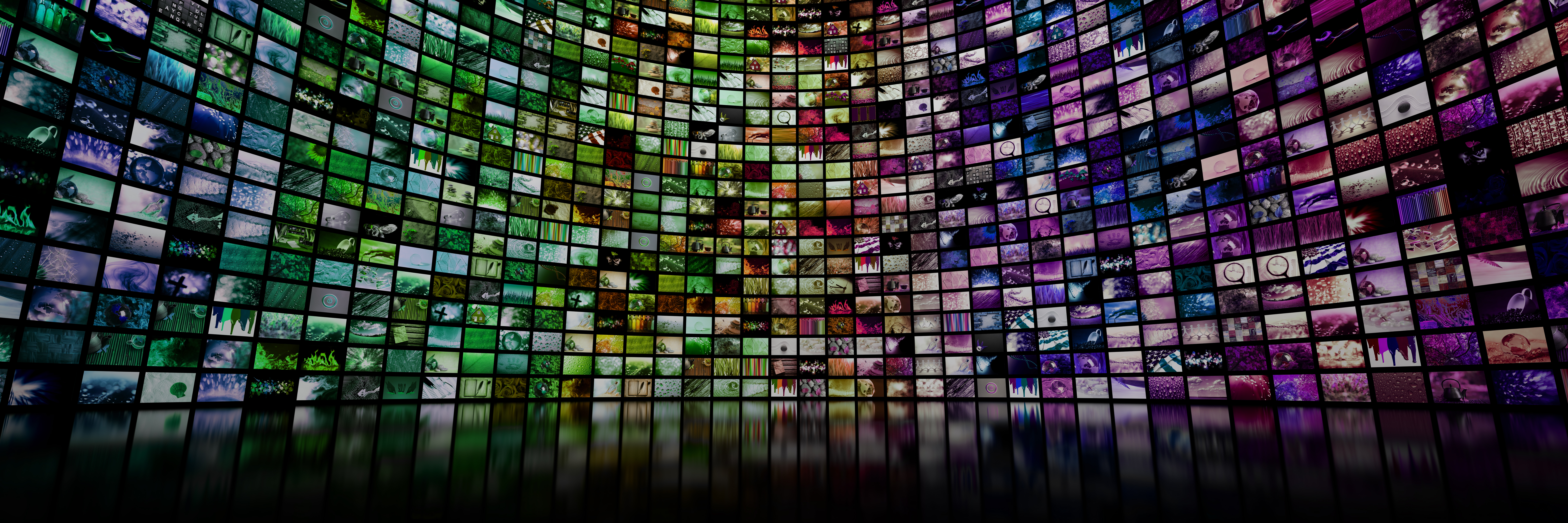
Digital Media
The most recent form of digital media is anything that exists in a digital world - requiring a computer to decode and process. The Internet is the most obvious form of digital media. All the above forms of media have either migrated or opened outlets on the internet but remain classed in those older forms because they remain their primary outlet, or that is where their traditions lie. Therefore podcasts (a form of radio), eBooks (a form of print media), and video platforms (a digital form of small-screen broadcasting) are considered part of this new medium – however, some straddle more than one type of mass communication. Websites and digital television are technically broadcast media at the same time.
Digital media also includes interactive digital elements, including online and offline gaming (traditional console gaming). It also includes mobile gaming, social media, and the web.
A History of Mass Communication
From cave art (which leaves physical signs of communication) and oral traditions (which do not) through the development of the written word to direct text-based messaging over the internet - almost everything humans have ever done has been to broadcast a message to an audience.
Mass communication is about sending one message to reach more than one person - whether travelers on the road encountering a land boundary or watching television. Civilization is a history of broadcasting messages within and outside the peer group to express cultural identity and convey unity, military might, glory, and other social messages.
Mass Communication in the Ancient World
We don't know when humans developed the ability to talk, but recent evidence suggests it did not start with anatomically modern humans (1). After the biological development of spoken language and before written language, any alphabet, or formal pictorial communication, mass communication almost certainly existed in a single form - word of mouth. This leaves nothing in the archaeological record, so we don't know how those ancient societies communicated outside the immediate groups. Still, monuments and art likely played a part in sending such messages.
If the main objective of mass communication is to inform as many people as possible about something originating from a single source, then in theory, that message may appear in any form. It may be difficult initially to see the building of substantial public works like the Great Pyramids of Giza and the Parthenon in Athens. Rome's Pantheon and the Great Wall of China are forms of mass communication, but they can have enormous reach and fulfill the same function as billboards today. Technically, ancient monument buildings are "outdoor and transit media," as listed in the last section, even if they primarily had cultural, religious, or practical functions (like defense).
These monuments were designed as messages to the world. The traveler carries those messages to their lands and other lands and the people they might talk to about the wonders they had seen.
Written Language - The Start of True Mass Communications
Written language almost certainly started with anatomically modern humans. The earliest surviving example is dated to the 35th century BC. Around this time, most written material was not for mass consumption. They tended to be religious or governmental, with religion and ritual far more likely in these earliest phases. It wasn't long before these small pictures were used to form written words.
The earliest examples of written documents identified as such are the Kish Tablets. We don't know what they say as they represent a transition between early pictorial writing and the cuneiform that succeeded them (2). If not religious, it could be a written form of word-of-mouth storytelling, as many early pictorial depictions tended to be.
Cave art the world over is believed to be the recounting of stories of events - either actual or embellished for the sake of what we today call "artistic license." Ancient Egypt was the first society known to have a large tradition of prose and poetry, though most of it was religious and ritualistic (3). It is not known whether such creative works were disseminated widely as it is unclear how literate non-elite Egyptians were. Even if limited to society's wealthiest people, then the audience would have been relatively small: Ancient Egypt had a 5% literacy rate (4).
China is credited with starting the world's first newspaper. If claims are to be believed, this original newspaper ran for nearly 2,000 years, undergoing multiple technological changes, including a shift from starting as a government report towards a mass appeal. The essence of the publication in 200 BC was to inform people of what was going on in China at the time, unlike newspapers later.
Meanwhile, in Europe, Greek and Roman societies highly developed written communications to communicate messages across their respective societies. Rome's enormous scope meant that communicating between the far borders of modern northern England, across North Africa, the Levant, and modern Germany required a highly sophisticated system of communication. Rome is credited with creating the world's first formal postal service called Cursus Publicus (5), which was used to communicate messages out of Rome from the imperial authorities and to the masses via their governors. It was like a cross between a postal service and a public address network.
Invention of the Printing Press
Nothing changed until the 15th century when Johannes Gutenberg invented the printing press. In the decades that followed, the printing press revolutionized mass communications. It made written communication open to the masses and would eventually lead to affordable books and cheaper production of printed material.
Gutenberg's earliest printers were used to print information leaflets from the church summarizing the sins that would lead to purgatory. Gutenberg invented it, but as he was penniless, he invited Johann Fust and Peter Schöffer to invest in his idea. The three worked together for some time, so the Gutenberg Press was born (6). Their first significant print run was The Bible.
However, their relationship soured when Fust asked for his money back - feeling that Gutenberg had squandered the money instead of using it to develop technology. Gutenberg didn't have the money, so after using the other two men and losing, Fust and Schöffer were granted ownership of the device and the technology.
The impact of the printing press cannot be overstated. Books and other literature were mass-produced faster and quicker than ever before, and with printed Bibles, more people had access to religious texts. The printing press was believed to have a strong hand in causing the Reformation. In truth, powers critical of the Catholic Church had been there for hundreds of years but now had the chance to organize and use the emerging technology to their advantage. The printing press provided cheap access to printed Bibles and to those critics who could spread their information faster than the church authorities could counter it (7).
William Caxton was the following early major player in the early history of the printing press. The Englishman was the first person to take the invention to England. He is also understood to be the world's first book retailer whose business model was to sell books to the public. This was a key difference from Gutenberg as Caxton was selling religious texts and secular works of fiction. His first printed book was William Chaucer's The Canterbury Tales (8).

Modern Newspapers & Journalism
As discussed in a previous section, newspapers were technically invented in China around 200 BC. Such information sheets continued; there was evidence of private ownership over such products in China in the 16th century. The modern newspaper as a mass-produced, mass-appeal printed document began in 1605 in Antwerp (then part of the Holy Roman Empire and now in modern Belgium). Called Relation and printed by Carolus, it was a weekly summary of events. The previous belief that the first newspaper began in Germany four years later was recently overturned and accepted by the World Association of News Publishers (9).
Britain abolished press licenses in 1695, opening mass communication to ordinary people - at least, to those able to afford the equipment and the ability to distribute it. In 1766, Sweden was the first country to enshrine freedom of the press in law (10). This is seen as the birth of journalism at a time when many other European powers were determined to keep a tight grip on information, treating the press as a line for government propaganda. When the US formalized its secession from the British Empire and became an independent republic, it too sought to ensure press freedom - with newspapers credited with helping spread information during the Revolutionary War. This came to be part of The First Amendment (11).
In truth, such steps had been coming for a century when John Milton criticized the English for requiring government approval to publish any book. This was in 1644, It is important to note that England was then in the grip of a civil war, with both sides using information leaflets as propaganda against the other. A landmark case in New York saw a newspaper publisher acquitted of seditious libel by a jury after the court found that his critique of the governor was accurate (10).
Niépce and Daguerre Develop True Photography
It is said that a single picture is worth a thousand words. Think of some of the most iconic photographs of all time, and you'll understand that many cannot be summed up quickly in just a few words. Earthrise from the Moon taken by the Apollo 11 crew, the Black Power Salute at the 1968 Olympics, the student in Tiananmen Square standing in front of a line of tanks - the list goes on. Photography is a powerful medium that can say so much while saying so little. With the power to distribute widely, photography is a form of mass communication, even without accompanying words.
Precursor technologies to photographic imaging have existed since antiquity, with simultaneous developments in China and Greece. However, what we understand today as photographic technology goes back to around 1800 when a British inventor tried to capture images from a camera obscura using light-sensitive paper and silver nitrate. It was not successful, but technology progressed relatively rapidly through the century. In 1825, Joseph Nicéphore Niépce exposed an engraving to sunlight and copied it photographically (12), creating the first photocopy.
Niépce repeated his experiments, but Louis Daguerre took up the mantle after his death. In the 1830s, he created the first authentic photograph. His method was so successful that they named an entire type of photography after him - the daguerreotype (13). This was the first type of photographic image to include people. Previous versions in this century took so long to capture an image that they could not capture moving people. But the daguerreotype was fast enough to capture a man getting his shoes cleaned on a street scene in Paris. No other people are captured because they are moving too quickly.
Film photography emerged later that century; this would rule the industry for over a century until digital photography entered the early 21st century. Film photography is based on the same premise that led to the development of moving pictures.
Audio Recordings - From Wax Tablets to Digital Music
Music is one of the world's oldest forms of entertainment, going back to 40,000 BCE when the first bone flute is dated. It's likely such early music "performances" were limited to small groups, at least until urban civilization and the likely arrival of the theaters of the ancient world and their equivalents. Most temples in the ancient world would likely have had music performances. Even where we don't have physical remains of music devices, we have the songs in evidence.
For most of its history in the civilized world, music was limited to these small premises - food and drink establishments (taverns, pubs, bars), places of worship, theaters, and music halls. In the late 19th century, the first devices to take music out of these small spaces and make it available to the masses were developed. The history of audio recording is broken into four eras (14):
- Acoustic era: marked by speaking horns, which would cause a sensitive membrane to react. Typical examples include wax cylinders in the early era and phonographs using flat discs later, operating on the same principles and technology.
- The electrical era is the age of the first electric microphones, amplifiers, and electronic recordings. This is the era of vinyl discs and - arguably - the mass music market industry developed in the early-to-mid 19th century.
- Magnetic era: The era of magnetic tape (including audio cassettes), hi-fi, and most importantly, sound engineering - the use of multitrack recording, which allowed for sound manipulation and better editing
- Digital era: Beginning in 1975, nothing can compare to the rapid technological development that happened within the first two decades of the computing age (15). It allowed for no distortion, multiple sound layers, and quicker and cheaper editing, democratizing music production
Marconi, Braun, and the Development of Radio
The next major date in the advance of mass communications was 1895. That year, Italian electrical engineer Guglielmo Giovanni Maria Marconi invented the "wireless telegraph" (16). Along with Karl Ferdinand Braun in 1909, the pair were awarded the Nobel Prize for Physics. Braun is further credited with developing technology that led to the invention of television (17), although full credit for the visual medium goes to John Logie Baird in 1925.
It all began for Marconi when he was just a young man - aged 20. He built his own devices based on Hertz's experiments and decided to conduct his experiments during a thunderstorm. His device picked up radio waves from lightning, and he set out to recreate the effect, successfully doing so in the same year (1894). It was a simple experiment in which he made a bell ring on the other side of the room.
That was only the start. Marconi developed more devices to work over longer and longer distances, creating a workable system of long-distance communication. At about the same time, Karl Ferdinand Braun worked on similar systems but most notably developed the cathode ray tube, which would later form an integral part of television. Marconi later admitted to borrowing some of Braun's work, but their technologies went slightly different directions and essentially complemented each other. Braun invented the three-way antenna, allowing the sender to send a direct signal. This is later credited with inspiring radar and intelligent antennas.
Soon, these inventions led to widespread radio broadcasting, including the first radio stations, entertainment, and news. Radio has many more uses today. For example, it also forms the basis of Bluetooth and Wi-Fi (wireless fidelity), transmitting data wirelessly.
Television and the Movies
Moving pictures or "flicker movies" have existed since the 19th century. However, early moving pictures and later television and film were not the same - they operated through the rapid movement of still images too fast for the human eye to process as individual stills. The most common form of this was the kinetoscope. These were not technically mass communications, as though they were designed to be viewed by many people - but just one at a time could view them through the scope (18).
It didn't take long before the first cinemas appeared in Europe. The USA was not a big player in the early years of filmmaking; the heyday of the US would come in the 20th century. The main difference between the old kinetoscope technology and what came next was the use of film strips rather than rapid-spinning stills. This formed the basis of most movie theatres worldwide until relatively recently. Now, digital technology is the primary way we view movies in a theatre though the film is still used in some cases. Most movies now are shot digitally, while some still prefer film (19).
Cinemas are not always accessible to everyone. By the 1920s, everyone could bring small cinemas into their homes via television. John Logie Baird experimented with several devices and methods, declaring in 1924 that transmitting a moving image of silhouettes was possible. This success formed the basis of his later experiments.
In October 1925, he transmitted the first TV signal on grayscale - a ventriloquist’s dummy head. It would take moments for the first TV transmission of a human face nicknamed when Baird asked an office worker to join him.
Television is now one of the most accessible methods of mass communication in the world. Sets are relatively cheap, and it is estimated that 96.7% of households in the US owned at least one television set in 2011. Those who do not often choose not to own them - either because they do not consume TV media or prefer web streaming - rather than for economic reasons, though there are certainly those homes that do not have them purely due to poverty (20). The ownership of so-called "smart" televisions - those with internet connectivity and streaming services - was around 80% in 2021 (21).
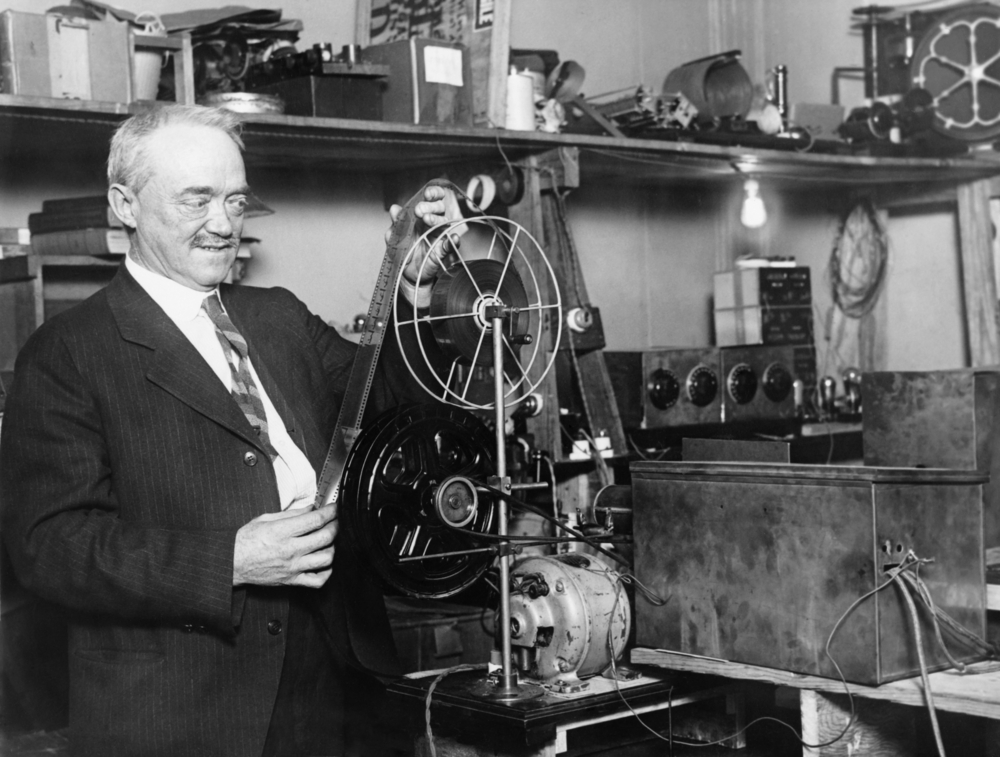
Internet and Digital Media
The Internet, or the World Wide Web, began in 1989 and was invented by Tim Berners Lee (22). Then, it was a scientific tool designed to facilitate the ease of rapid communication between researchers worldwide. Today, it is a global network of servers, interconnected computing networks using an internet protocol suite to communicate between networks and allow us to connect our devices wherever we are.
However, its history as a theory and a fledging technology goes back to 1960 when the US government researched packet switching as a military application. These technologies often start as military research, which will then filter through to academia, and finally into civilian use. Through the 1970s, the internet's precursor ARPANET acted to communicate between military and academic centers (23). When funding was granted for the National Science Foundation Network in 1980, along with private investment, the internet, as it was then, became a global scientific endeavor.
Soon, many private networks merged, commercial servers were linked in, and enterprise-level technology hooked up, setting up the path for the internet as we know it today. Growth was exponential, and it soon incorporated other technologies, such as telecommunications, to facilitate Internet access. The first websites for commercial use, direct communication, and soon online shopping arrived on the scene.
Social media is seen as a relative latecomer. However, it also originated in the 1960s (24), developed through so-called bulletin boards, right through to the multimedia platforms we all use today to post videos, short messages, and images.
The internet allows not just mass communication but a form of democratic access. Individuals and not just businesses can broadcast a message to potentially millions of people at once with little or no capital, a far cry from the investment needed in the early days of the printing press. It has facilitated the rise of independent magazines, small press publications, and self-published literature for little to no cost - making reaching huge audiences relatively easy.
Mass Communication Theories
As noted above, the history of mass communication goes back to prehistoric art, through the development of writing and early literature (including non-fiction), and through to the World Wide Web.
As it is an important development in human civilization and uses multiple technologies to help us achieve mass appeal, it has naturally become an academic study. As such, there are many theoretical models around which new forms and analyzing mass communication are framed. Mass communication academia studies how message sources develop a framework for a message, compose the message, send it, and how receiving audiences use their agency in receiving, interpreting, and processing it.
In the modern world, where we generally all have access to the same media, many mass communication theories have arisen to explain all this.
Hypodermic Needle Theory
The first theory was developed in the 1920s - purely from an objective viewpoint and based purely on social science principles.
Also, many of these early scientific theories were based on anecdotal evidence of media messages relaying a predictable and knowable framework. The theory was known as the "hypodermic needle theory" and sometimes "the bullet theory" (25). In brief, this is the idea that the sender strategically places meaning into a message and injects it directly into the recipient(s).
It wasn't new; the Hypodermic Needle Theory was little more than a modern repackaging of Aristotle's communication model that described three linear elements: a communicator, a message, and the audience, with the latter being a passive receiver rather than an active agent. The model fell flat during the much-hyped radio broadcast of War of the Worlds when theorists could study a real example. They found it lacking (26).
The following decades were an explosion of mass communications theories, largely driven by the technology behind it (though not solely) and adapting to new ways of doing things.
Circular Theoretical Models
Moving away from the linear approach to mass communication, three theories propose media communication is a circular process. The Shannon & Weaver model was the first to work on the assumption that communication is two-way while adding something called "noise" that would distort the message - acting like a filter (27). The Westley & Maclean model describes the (for the first time) idea of linear feedback - that the audience is capable of and communicates right back to the source. It also introduces an exciting paradigm where no communication has happened until the receiver responds to the message they are being sent (28).
The third, the De Fleur model, combines previous models and adds a third element - understanding the target audience (29). The model sees the recipient as an essential node in the communication process, not just a passive recipient blindly reacting to the message.
Agenda Setting Theory
This is a form by which the media essentially acts as a gatekeeper or polices the narrative or message. Agenda-setting theory is the idea that the media decides what issues are important (30) and focuses on those issues accordingly, often to the detriment of other issues. How much they focus on it raises the issue’s importance in the audience’s mind.
Agenda Setting Theory examines issues such as what goes on the front page of a newspaper or web news outlet and how much the media covers an issue. There are many reasons why they might focus on an issue - it may be important that as many people know as possible, or it may have a huge public interest even if not immediately concerning.
For its part, the media focuses on crafting a message to determine how the recipient ought to feel about the issue being presented. There are potentially sinister reasons for doing this. Is this a trivial matter being used to hide other issues that may be more important? On September 11th, 2001, a British MP said, "This is a good day to bury bad news," as the world focused on the 9/11 attacks. She commented on the UK budget, knowing it would contain elements the electorate would not like.
Since then, news media and politicians have used this philosophy to hide lousy news on days when something much worse has happened.
However, agenda-setting is not just about what we see in the news media and how politicians might manipulate the messages that we see. Entertainment may also use this to raise issues through storylines - TV dramas and movies about social issues can raise questions across media formats to accompany real-world events. So, it remains in the public perception.
Catharsis Theory
Almost exclusively associated with entertainment media, this concerns the well-being of a group receiving the message. It measures the relief of concern, stress, and rage while imparting a sense of calm and relaxation. There is also a sense of catharsis to see characters going through personal trauma - usually by seeing the acting part suffer. In essence, healthy outlets for violence and anger imbue the recipient with a sense of calm. Those who dispute that violent video games make people violent point to the masses of evidence that such violent games in which killing and blowing things up are common provide this catharsis (31).
Entertainment Education Theory
Developed in the 1960s, it began in South America following the success of a drama series about a rural Peruvian woman who moved to the big city and took up a sewing class. She subsequently developed her fashion brand and became a successful businesswoman. This fictional account, designed as a form of entertainment, had a massive impact on viewers. A considerable spike in sewing classes followed. In the wake of this, mass communication academia began looking at the concept of entertainment as a form of education.
Soap operas are now a global phenomenon that regularly portrays everyday issues on screen, educating on social issues and raising awareness of things like health. Drama television has been credited for encouraging people to look out for signs of cancer, and domestic abuse, raising awareness of disability (32), and encouraging responsible action. This differs slightly from Agenda Setting Theory as it is more general, while Agenda Setting is part of a coordinated campaign focusing on an issue for a short time.
Knowledge Gap Theory
Positing that there is a class knowledge gap, it looks at the relative consumption of information from a medium based on prior access to information. Those with higher education and social status will acquire information much faster. It assumes that wealthier people and those in wealthier countries do not struggle to acquire information based on cost. They also benefit from access to prior information and do not have such a steep upward learning curve. In comparison, there remains a definite wealth gap that filters into other areas and translates socially into a knowledge gap based on ongoing access to outlets (33).
With this, mass communication becomes a social justice issue to be aware of and account for, and another issue where there is a need to level the playing field. Closing that knowledge gap is as important as other socioeconomic gaps so those with less access are better informed and improve their situation.
Libertarian Theory & Authoritarian Theory
The idea behind libertarian communication theory is that ordinary people have the mental nous to determine good information from bad and to judge new ideas on individual merit. It presumes rationality of thought, thought processes, and a willingness to change a mind when presented with new evidence. Therefore, there should be no restrictions on the press as they will live and die by the quality of their information and interpretation. Also, the press should not withhold or limit information to ensure maximum availability for the best possible informed decision.
The authoritarian theory is the opposite - people do not know what is good and bad information, so they cannot ascertain the difference. They will be led astray by bad thoughts and insidious messages. It includes censorship which can be political, religious, or moral. Still, it can also exist within a democratic society and be selective when media elements criticize the military or corporate entities.
Social Responsibility Theory
Social responsibility theory is philosophically somewhere between libertarian and authoritarian theory. It permits a free press as it does in most Western nations, without formal censorship. However, it makes provisions for scrutiny of the press in public discourse - giving room for both unspoken regulation and encouraging best professional practice. Further, the media should accept obligations requested by external bodies through regulatory bodies, professional licensing, and other checks and balances.

Limited Effects Theory
How much impact does media have? Can it change enough minds to force change? Or does it tap into a mentality or general perception already there? This is the idea behind the Limited Effects Theory. Media does not change minds; it simply appeals to those who already hold that view of an issue. While some minds may be changed, the effects of this are limited either by a number or by scope - appealing to outliers and never impacting the view of those with altogether the opposite perspective. In this case, the media acts as a "reinforcer or endorser" of perception (34).
Meaning Theory of Media Portrayal
This concept proposes that mass media is not solely about propagating information to receivers to receive, process, and learn facts. Humans are social creatures with vivid imaginations. We seek meaning from mass media as we absorb it (35). Examples include:
- Extracting meaning from literary works
- Use of language and meaning drift/evolution
- Substitution or addition of language (in the US, the symbol # has always been called the pound, but the UK name "hash" has taken hold through internet culture "hashtag")
Media Dependency Theory
One person's life experience is limited based on factors including but not limited to socioeconomic background and income, geographic limitations, and fewer physical limits such as personal experience and perception of the other. According to this theory, such limits can only be broken or exceeded through the consumption of mass media communications (36). This exacerbates a pre-existing dependency. It also presents the idea that media outlets create dependent relationships with their audience through targeted messaging wielding the power the audience gives it. An example of this is the so-called echo chamber effect in news reporting.
Media Malaise Theory
This perceives and presents mass media as purveyors of doom. How news media, in particular, covers events can negatively impact society. A preoccupation with insults traded between public figures (especially politicians), declining public trust, fueling cynicism, and encouraging political apathy (37). To some, it is a tool of those in power to induce cynicism channeled for the deliberate prevention of meaningful change.
Recently, media malaise has led to something called "doom scrolling," where an audience spends time on an electronic device consuming negative news article after article (or headline after headline). Negative portrayal presentation and sensationalism create malaise in the audience, fueling dependency and habitual watching for updates. Fair coverage is not given, nor is the plethora of pleasant and heartwarming events that happen worldwide with just as much regularity.
Media Richness Theory
This is the concept and study of a media's richness, examining the leanness of a single message - even over multiple channels – style vs substance. Media is as much about presentation as it is about content. Developed from corporate communications, it soon applied to mass media and the public (38). There are two ways to approach media richness. The first is information from multiple sources to one person at a time for personal support or groups to communicate a single point.
Medium Theory
Researchers in this theoretical framework look at communication efficiency through the lens of each medium to determine the successful transmission or otherwise of the message.
Taking mass communication beyond the audience is at the heart of most other theories; medium theory examines different channels for broadcasting a message. Here, the media origin is merely a conduit from which a message is sent. The actual channels they use - whether printed material, audio, or video- are used based on the audience’s needs. The receiver demonstrates their reception to engaging with the message based almost entirely on the channel or channels used in its distribution. Which channels work depends on social or demographic preferences, and they determine the efficiency.
Mood Management Theory
Linked to earlier concepts of Meaning Theory and Malaise Theory, this posits that an audience will consume or ignore a media outlet and its message depending on the mood at the time of consumption. This puts active choice into the hands of the audience while many others do not while acknowledging how personal mood can impact one's choice of media at any given time - a plethora of choices allows the audience to change or reinforce their existing mood. This theory studies such psychological concepts as cognitive dissonance - the idea that it is possible to believe two contradictory viewpoints simultaneously (39).
Play Theory
It is one of the first theories to use psychology and subjectivity in a framework that previously treated mass communications theory in terms of objective social science. Play theory treats media consumption as a form of play or leisure rather than one to educate and inform - primarily used for personal satisfaction. Entertainment media may educate us - but games, music, TV, movies, and other forms of leisure are methods of play and are not, by definition, designed for information acquisition.
One example where news and entertainment cross over is when the media follows the lives of celebrities - reporting on who they're dating/married to, where they went, and their upcoming appearances either on or off-screen. Our lives are not particularly enriched or otherwise made better through such media. Yet, we may learn something (40) even though we might consider that information low value or secondary to the play aspect.
Reception Theory
While most theories examine the relationship (including transmission, vectors, and outlets), this theory looks at how a broadcast message is or may be perceived by the audience. This is one of a few theories to focus exclusively on the reaction of the intended audience to the message. It includes how the perception of work changes over time, from one generation to the next, or which each social attitude changes (41). It is less concerned with individuals and more concerned with group perception.
Therefore, it determines the ability of the media to examine the tone of external feedback and adjust its future message accordingly for better reception.
Technological Determinism
Almost the opposite of reception theory, this reduces mass communications success or otherwise, and its impact on society, purely to the technology used to deliver it. Thus, new forms of technology with greater reach will automatically be more successful than those without. Gutenberg's Printing Press is an excellent example of how the spread of ideas from printed material created a new market; printed books are now open to the masses and have opened society to accepting new ideas. It creates unpredictable social change with massive permanent consequences (42).
The Spiral of Silence Theory
In many cases, media may provide an outlet for broad discussions, especially with easy access to technology used to broadcast messages. However, there is a negative impact. When audience members feel part of a minority voice, they tend to slip away from the media environment (43). This can be religious or political or concern messages about demographic identifiers such as sexuality and gender identity, but it can also be philosophies and movements. It can also include single issues and personal issues. For example, an age group in a workplace might feel one company policy benefits another age group and actively disadvantages them. They may express their views, but then the weight of the majority voices essentially silences them from continuing to express their frustrations.
Two-Step Flow Theory
Developed during a US presidential campaign in the 1940s, it was found that media reports are much less impactful than personal and informal reports on a campaign or voting behavior. This flew in the face of the stated convention at a time when mass media was opening up through radio, television, and broader access to mass communications. This is why media outlets employ opinion leaders (for example, on-site reporters on television) to relay the message of the media outlet (44). It gives the media a personal front, a face, and an individual voice, even from a large corporate entity.
Uses and Gratification Theory
The opposite of the hypodermic needle theory, this theoretical framework presents the idea that people use media to fuel their own needs until they have reached personal satisfaction and maximum consumption - and then actively reject any further information. It is about what people do with the messages in mass media communications rather than how media will impact them and their lives. Here, an audience will refer to media for external evidence or ways of highlighting or proving points in a message they are trying to broadcast (45).
Ethical Issues for Mass Communications
As we all receive messages from many mass media outlets virtually every minute of every day, it has led to the rise of multiple ethical issues. Regulatory frameworks and laws control some, while others do not or simply cannot be regulated by the industry or by the government.
False Advertising
Advertising exists to sell products and services. Therefore, they portray the company and what it sells in the best possible light to get the audience to buy it. However, this often oversteps the mark of misleading claims or outright lying. Many countries have a code of conduct - some can order the removal of ads from television, radio, and billboards, impose fines on the advertisers for making those false claims, and then publish a public retraction.
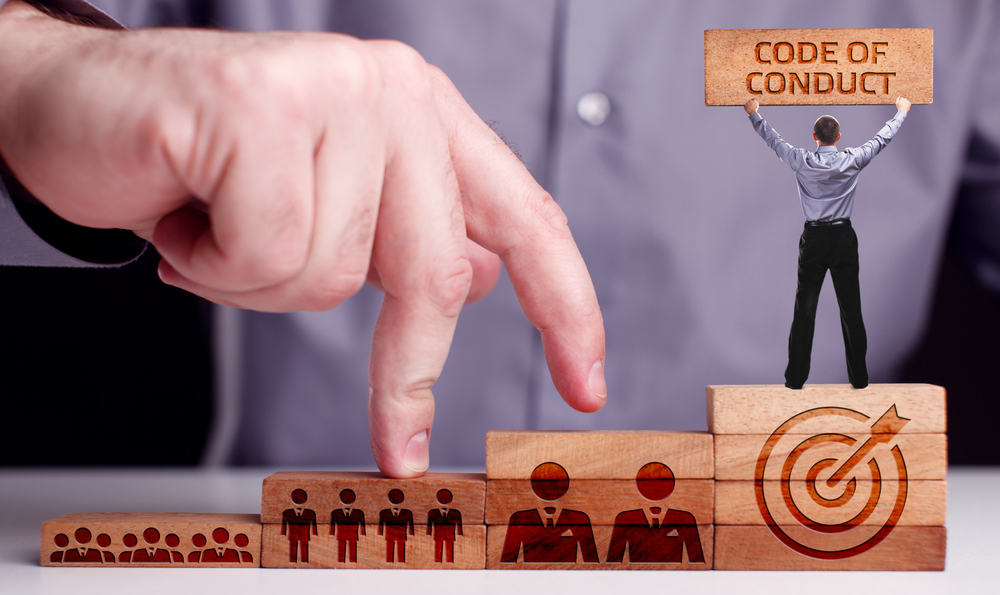
Sexual Objectification
It is well known in advertising media that "sex sells." The problem, as many campaigners feel, is that sex and sexuality are often used to sell products and services that have absolutely nothing to do with either of those subjects. Whether that is bikini-clad, women used to sell cars or vacations, and even soap or couples positioned in suggestive ways are used to sell clothing, perfume, and aftershave. The most common use of sexual objectification as a sales technique is in travel, beauty, clothing, and medicine (46).
Media Influence Overreach
The concern about modern media, especially in news reporting, is that they no longer report the facts. Investigative journalism has given way to sensationalism. Quality content is passed over for the attention-grabbing headline. Op-eds have passed investigative journalism. These things almost inevitably lead to sensationalism to keep a captive audience trapped in an echo chamber of information. This issue sometimes creates further ethical issues listed in this section.
There is some concern that the media influences the agenda too much - stories that go viral don't always have merit and are not always entirely accurate. Politically, pro or anti-government media can either distract the electorate from something a government is doing, hyper-focus on something trivial that would make the government (or public figure) look worse than it is (47), or outright mislead the public.
Churnalism
Related to the agenda-setting issue, "churnalism" is a portmanteau of "churn" and "journalism." There are two main problems with churnalism. The first is misreporting news items based on the desired speed of delivery. This means incidents are often reported by one outlet and copied by the others - even among high-quality outlets usually known for accuracy - without checking their veracity. This has happened to multiple celebrities where a fake death report has been widely reported as news outlets pick up trending hashtags on Twitter and other social media and report it instantly.
Second, so much churnalism is mass-produced, low-quality news, and non-stories filler material based on press releases. This is an issue for print media and the demand for up-to-the-minute online articles. These articles often distort or add details to allure the intended audience (48). One Daily Mail article in 2009 headlined "How using Facebook could give you cancer" based on a press release stating how social isolation (and relying too much on social media) increases the risk of heart disease and cancer (49).
False Balance
Various forms of the Fairness Doctrine exist in most Western countries. Such a government step requires balance and equal treatment of all sides - particularly regarding issues of society and politics. However, it has led to something called "false balance" or "false equivalence" that has given fringe voices airtime and freedom of expression on media outlets. This concept of "ideas democracy" is a form of misleading information, creating the idea in the general population that some things are up for debate. While many voices are valid in political discourse, this idea of fairness and freedom of expression has extended to non-experts on complex subjects often covered in science (50).
Edutainment Blurring the Bounds of Reality
While so-called "edutainment" - the blending of education and entertainment is largely seen as a good thing and encourages debate and information retention, this is not always the case. For example, Hollywood movies rewrite or reinterpret history to make something more exciting or less unpalatable, which can mislead the public about actual events.
While some are innocuous, such as in Braveheart, where William Wallace and Edward I die at the exact moment (in real life, they died years apart), and where William Wallace has an affair with the wife of soon-to-be King Edward II (at the time she was a child still living in France) this is not always the case. The Patriot, also starring Mel Gibson stated that Benjamin Martin did not own slaves when he had.
Communication Conglomerates
Many news media outlets worldwide are run by a few powerful, influential international figures who control a large percentage of the media in many countries. Critics feel this is too much power in the hands of the unelected and that the media can sway governments in favor of its interests while spreading propaganda and misinformation to the electorate, encouraging them to vote against politicians that could ultimately benefit them. The mantra "those who control the information control the world" is often repeated. Democracy and political clarity campaigners feel this negatively impacts positive social change and campaigns for true equality.
Big Data Misuse
It is said that data is the new currency - sold and traded often for massive amounts of money; there is some concern from individuals about how much information companies hold on us and what they are doing with it. Big data has many great uses, not least in academic studies, to help us understand public health and disease more. However, it is also used to send us targeted advertising with potentially multiple issues - encouraging overspending and accumulating data on something we might be considering buying before we even know we need it.
Such data is held secretively, although some authorities have introduced legislation to force openness, making some shadier types of data harvesting illegal. The European Union's GDPR (General Data Protection Regulation) intends to do this. The US and other governments are interested in determining whether this would work in their countries. In 2016, the Cambridge Analytica Scandal at Facebook brought all these issues to a head.
Children Accessing Adult Content Online
Easy access to adult material such as pornography and violent media has been a matter of some debate since the internet arrived in the late 1990s. Various regulatory frameworks have been proposed. However, minors can still access adult material without oversight from parents or guardians. Current guidelines include encouraging parents to use parental locks such as passwords and pin codes. Still, often children have a better understanding of technology than their parents and know ways of getting around such locks. Self-certifying "Yes, I am over 18" is considered insufficient yet remains the primary access method on many websites.
Normalizing Antisocial Behavior
Data on whether video games make people violent is mixed. There is solid evidence that engaging regularly with such violence increases overall average violent thoughts and activities for many people (28). However, there is an equal amount of evidence to suggest that such violence provides relief and catharsis from anxiety and stress. Children engaging with such content that promotes and normalizes antisocial behavior face many of the same criticisms and technological measures as accessing adult content. However, for adults, this is a little difficult.
Visually Misleading Images
Photo manipulation is almost as old as visual art itself. In days gone by, portraits were painted to present the subject in the best light - whether that is a landscape or a person, and to present them as more visually striking than they are in real life. As photography has become more accessible since the 1970s, so has the prevalence of photo manipulation. There are several issues of concern here:
- Unrealistic body images of idealized appearances of models. This process is known as "Photoshopping," and it creates unattainable body shapes and weights that mainly young people will develop eating disorders trying to attain them
- Manipulation of real estate properties making rooms and outdoor spaces seem larger than they are (achieved easily with the appropriate lens) to increase interest
- Manipulating vacation destinations to make them seem more appealing such as removing buildings near the Great Pyramids of Giza at National Geographic (51).
In the first instance, mental health charities have campaigned for beauty product manufacturers and retailers to do more to help these mental health and eating disorders.
Trial By Media
There are countless cases where media has pre-supposed guilt or innocence or news outlets have influenced public perception of an individual's guilt or innocence. From pointing out an alleged rape victim's attire during criminal attire on the night of the attack while speaking extensively about the good family background of the accused, it can be challenging to find juries who have no opinion on the matter or who have not encountered such information. Presumption of guilt or innocence (and it is usually guilt more often than not) can risk a mistrial (52).
We also see this in how children are treated regarding crime. A perpetrator is a "15-year-old youth," while if the victim was the same age, they become a "15-year-old child." Scapegoating of groups and individuals often sets the narrative and leads to the presumption of not just individual but group guilt or innocence.
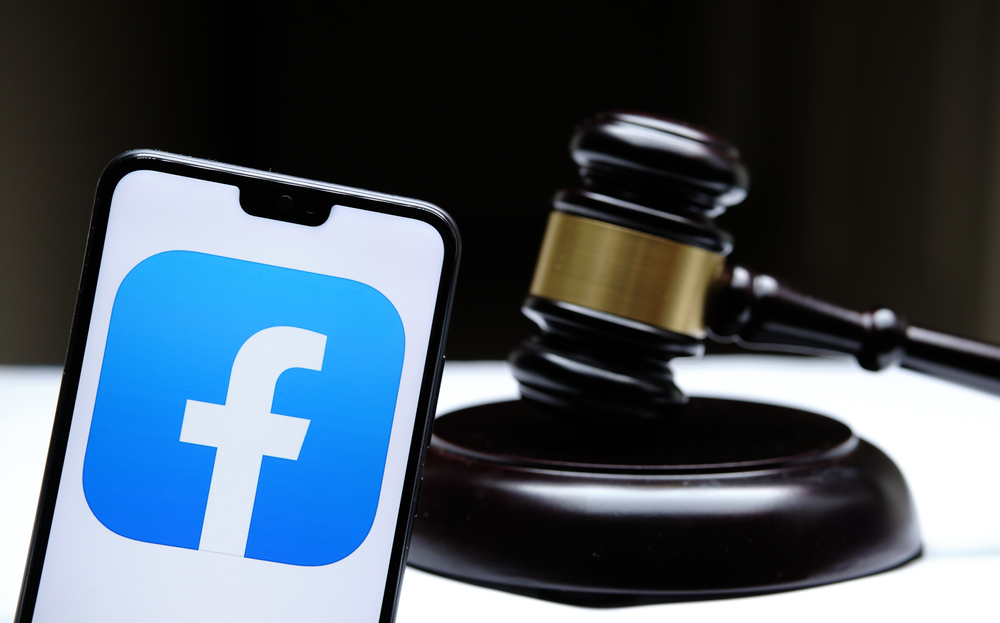
Lack of Diversity & Representation
Diversity is not just a problem for businesses with a disturbing lack of LGBT, non-white, and non-male faces. It impacts all corners of life in white-majority countries like the USA. Internet culture and the communities that use social media to coordinate campaigns for more diversity have so far been hugely successful in forcing change. However, more must be done to present subgroups within those groups - trans, and non-binary characters, for example.
Representation also means ending stereotypes and the presentation of underrepresented groups in complex lights rather than ticking a box or fitting a narrative. Several tests exist to determine whether a piece of fictional media attempts to promote such groups away from their stereotypes and social expectations:
- The Bechdel Test examines female representation - if two named female characters have a conversation without a man present, and they discuss something other than men, it breaks a stereotype of women in media
- The Vitto-Russo Test similarly examines LGBTQ+ representation. Does the media have a character who is unambiguously LGBTQ+? Does their sexuality define them, and would their removal fundamentally alter the story?
- Nikesh Shukla devised a test where two named POC should have a conversation in which their race(s) are not part of the discussion
There are others, but sexuality, race, and gender are the three most discussed under-representation in the media.
Online Safety and Abuse
There are laws in most jurisdictions to deal with street abuse and harassment. However, online abuse comes with a specific set of problems and ethical concerns. First, social media and online gaming communities where this type of abuse is mostly centered don't do enough to tackle it (53). Trolls hide their identity and attack from behind anonymous accounts - often multiple at the same time to give the impression multiple people are piling in to attack the victim of the abuse. They often reappear with new accounts, circumventing any bans.
Secondly, social media companies often have unclear guidelines on what is or is not abuse, often not applied equally among all moderators or those employed to act against those who abuse. Facebook, especially, has been accused of not doing enough to tackle online abuse. At the same time, Instagram has, in the past, been associated with higher levels of depression and poor body image due to the types of content it promotes.
Thirdly, there are scams - the vacation competition entry is usually apparent. What is less obvious are those that ask questions such as "How old will your oldest child be this year?" "What was the name of your first school?" and "What was your first car?" Seemingly innocuous, scammers collect this data and can hack social media accounts and even bank details.
Stereotypes & Prescribed Roles
In many elements of US media - television, movies, video games, and books- specific demographics are stereotyped into several prescribed roles. For example, drug dealers are nearly always Hispanic or Black; middle-aged White women are generally homely and motherly. At the same time, the children are portrayed as emotionally stunted and afraid of commitment. Older Black men are stereotyped as wise uncles, while older Black women are portrayed as brash and loud.
LGBTQ+ characters are often outrageous and hypersexualized, while committed LGBT couples are portrayed as having no sexual desires. Physically disabled people are either portrayed as constantly miserable or as inspiring larger-than-life figures. Mentally ill people are portrayed as generally violent and prone to fits of rage. In contrast, those with OCD are portrayed as cleanliness-obsessed when this is just one potential manifestation of their illness.
Critics feel this is a form of social control or conditioning that translates into harmful stereotypes of those groups in real life.
What Does the Future of Mass Communications Look Like?
Current Trends
News consumption: The internet has led to a slow decline in print media. For years, analysts have predicted its death. This may or may not be alarmist, but most areas of print publication have seen a severe decline in the last twenty years - though this is slower than predicted. Between 2005 and 2021, over 2,200 newspapers closed in the US alone (54), while demand for newspaper journalists has dropped by 50%. However, the demand for journalism continues to grow at the average rate (55) as people increasingly get their news from the internet (56).
Entertainment: arguably the most impacted with DVD and Blu-ray sales giving way to streaming services in TV & movies; music physical media like CDs have also given way to streaming and other digital formats - CD sales have dropped 97% since the year 2000 (57), though vinyl has made several comebacks. Even video gaming - a medium that predates the internet for several decades - has been impacted by online environments. Physical media is just 17% of sales in the US (58).
Social media: This is one of many major growth areas for mass communications on the internet. When social arrived, it was little more than a communications platform. Now, businesses use them to market products and services. There are even specialist social media communications marketers. It's also an excellent tool for distributing news and other digital forms of traditional media: mainly broadcast and printed.
Blogging and vlogging: have also democratized information sharing, as cheap access to video and photography has created many small businesses. Now, no matter where we are, we can upload media to the internet to an audience of millions. This has democratized news media and content once limited to magazines.
Sole creative entrepreneurship: The COVID-19 pandemic put many people out of work, leading to sole proprietor businesses working from home (59). Most turned to creative expression in mass communications and other media, fulfilling long-held dreams about becoming an artist, author, photographer, vlogger, or video game creator. Tip jar sites are not new, but they did undergo mass expansion during the pandemic, allowing individuals to accept small fee transactions for their creative efforts and even paid membership for regular support.
Paid subscription model: Some areas of mass communication media have seen great success. Music is on Amazon and Spotify, and TV and movies are through Netflix, Amazon Prime, Disney Plus, and Hulu. Video gaming platforms like Xbox Live Gold have operated on this model since around 2010. Now, news media are considering operating this way - the end of free news (or a limited number of online views) may be the way forward to combat declining print media sales.
What these environments will look like in five years is unclear. They are not always driven by technology, but it does seem these widespread changes to the mass communications environment, the ability to buy high-quality equipment much cheaper than before, is not the only impact we can expect to see. We may also see considerable social change, paradigm shifts, and new theories as access to information increases.
Emerging Concepts and Technologies for Mass Communications
Automated News Media
Also known as robot journalism or automated journalism, this applies artificial intelligence concepts and technology to news reporting (60). So far, this area of mass communication hasn't adopted AI meaningfully. If it does adopt this tech, one potential use is to apply it to news stories - find out what is trending and generate items based on what the analysis discovers. It could also be used to update news items in real-time and test what headlines work. The NYT is currently testing such a system.
Drone Reporting
Conflict is an inevitable part of human civilization. News reports from conflict zones come with a high price - severe injury or even death to the news team. Numerous deaths have been reported as on-site journalists are caught in the crossfire or hit with rocket strikes or IEDs. Drones can be launched safely and get closer to any action. As well as warzones, drone reporting will be more accessible from disaster zones - allowing news teams to get closer to epicenters and problem areas even easier than helicopters.
Fighting Fake News
Misreporting news incidents, bias in presentation, and outright false data are not the sole preserve of large companies. We can fight fake news in many ways - often funded by large and well-organized backers. Fact-checking charities have arisen in response to this, and some governments are drafting legislation for both regular media and social media to do more to combat misinformation. New technologies are already in development; many social media sites are looking for keywords to which they will attach a "potential misinformation" tag developed during the COVID-19 pandemic.
Augmented Reality / Virtual Reality
Already used in digital media, its uses are currently limited to entertainment (video games) and education, and they are particularly useful as a fitness tool. Augmented Reality may have uses beyond leisure in the future, and research is ongoing into uses in advertising and marketing over digital platforms. In 2015, Amnesty International invited London residents to use VR headsets to walk around a virtual Aleppo to look at the damage during the ongoing war there.
Sources/References
- https://www.smithsonianmag.com/science-nature/human-ancestors-may-have-evolved-physical-ability-speak-more-25-million-years-ago-180973759/
- https://www.archaeology.org/issues/213-1605/features/4326-cuneiform-the-world-s-oldest-writing
- https://www.worldhistory.org/Egyptian_Literature/
- https://www.jstor.org/stable/2801598#
- https://bathpostalmuseum.org.uk/500bc-to-the-roman-postal-system/
- https://stmuscholars.org/the-printing-press-that-changed-the-game/
- http://scarc.library.oregonstate.edu/omeka/exhibits/show/mcdonald/public/religion/
- https://www.britannica.com/biography/William-Caxton
- https://www.historyofinformation.com/detail.php?id=34
- https://www.britannica.com/story/250-years-of-press-freedom
- https://www.law.cornell.edu/constitution/first_amendment
- https://micro.magnet.fsu.edu/optics/timeline/people/niepce.html
- https://www.fi.edu/en/science-and-education/collection/daguerreotype-photography
- https://www.rrfedu.com/blog/2018/07/02/history-recorded-sound/
- https://www.researchgate.net/publication/241729280_Any_Song_Anytime_Anywhere
- https://www.nobelprize.org/prizes/physics/1909/marconi/biographical/
- https://www.nobelprize.org/prizes/physics/1909/braun/biographical/
- https://www.scienceandmediamuseum.org.uk/objects-and-stories/very-short-history-of-cinema
- https://filmmakermagazine.com/107353-23-films-35mm-released-in-2018/
- https://www.nytimes.com/2011/05/03/business/media/03television.html
- https://nationalinterest.org/blog/techland/80-percent-us-households-have-least-one-smart-tv-or-smart-something-187418
- https://webfoundation.org/about/vision/history-of-the-web/?gclid=Cj0KCQiA0eOPBhCGARIsAFIwTs79-r5Sem8yVyVTMJceoJV0XSms6Kmb3yMGh7vpIpNpLq_QNHC6DmMaAhTCEALw_wcB
- https://www.nsf.gov/news/news_summ.jsp?cntn_id=103050
- https://uk.sagepub.com/sites/default/files/upm-assets/107405_book_item_107405.pdf
- https://open.lib.umn.edu/communication/chapter/15-2-functions-and-theories-of-mass-communication/
- https://www.communicationtheory.org/magic-bullet-or-hypodermic-needle-theory-of-communication/
- https://www.communicationtheory.org/shannon-and-weaver-model-of-communication/
- https://www.communicationtheory.org/westley-and-macleans-model-of-communication/
- https://www.communicationtheory.org/de-fleur-model-of-communication/
- https://www.sciencedirect.com/topics/social-sciences/agenda-setting-theory
- https://www.encyclopedia.com/media/encyclopedias-almanacs-transcripts-and-maps/catharsis-theory-and-media-effects
- http://eprints.bournemouth.ac.uk/22130/3/Heward%2520et%2520al%2520-%2520dementia%2520stigmav2.pdf
- https://helpfulprofessor.com/knowledge-gap-theory/
- https://www.communicationtheory.org/limited-effects-theory/
- https://www.communicationtheory.org/meaning-theory-of-media-portrayal/
- https://www.britannica.com/topic/media-dependency-theory
- https://www.cambridge.org/core/journals/british-journal-of-political-science/article/abs/mass-media-effects-mobilization-or-media-malaise/05307F320C6F18E7F1E05773D306BDBA
- https://helpfulprofessor.com/media-richness-theory/
- https://www.communicationtheory.org/mood-management-theory/
- https://www.communicationtheory.org/play-theory/
- https://www.oxfordreference.com/display/10.1093/oi/authority.20110803100407730
- https://www.sciencedirect.com/science/article/abs/pii/B9780080970868850345
- https://noelle-neumann.de/scientific-work/spiral-of-silence/
- https://www.communicationtheory.org/two-step-flow-theory-2/
- https://www.communicationtheory.org/uses-and-gratification-theory/
- https://www.businessnewsdaily.com/2649-sex-sells-more.html
- https://www.pewresearch.org/short-reads/2020/04/08/five-facts-about-fox-news/
- https://archives.cjr.org/the_news_frontier/churnalism_exposed.php
- https://www.nursingtimes.net/archive/facebook-and-social-networking-sites-cancer-risk-25-02-2009/
- https://phys.org/news/2014-07-problem-false-science.html
- https://cs.stanford.edu/people/eroberts/cs181/projects/photoethics/default.htm
- https://arisa-project.eu/the-presumption-of-innocence-and-the-media-coverage-of-criminal-cases/
- https://www.amnesty.org.uk/press-releases/twitter-and-facebook-failing-protect-women-mps-abuse-joint-human-rights-committee
- https://www.washingtonpost.com/magazine/interactive/2021/local-news-deserts-expanding/
- https://www.bls.gov/ooh/media-and-communication/reporters-correspondents-and-broadcast-news-analysts.htm#tab-6
- https://www.pewresearch.org/journalism/fact-sheet/newspapers/
- https://www.statista.com/chart/12950/cd-sales-in-the-us/
- https://www.statista.com/statistics/190225/digital-and-physical-game-sales-in-the-us-since-2009/
- https://www.ft.com/content/3cbb0bcd-d7dc-47bb-97d8-e31fe80398fb
- https://www.bbc.co.uk/rd/publications/automated-news-at-bbc-algorithmic-journalism
Recent Articles

Using Key Communication Skills To Manage Stress
Stress is something that happens to almost every person from time to time. It is the body's reaction to something that happened or is happening. Your body reacts to the situation and it causes physical, mental, or emotional strain. Stress is very common and doesn't have to be a negative…

Want To Communicate More Effectively In The Workplace? Do This!
Within the workplace, it's absolutely critical to be able to communicate clearly and effectively. No…

Everything You Need to Know About Communication Disorders
Communication disorders affect nearly 1 in 10 people, and almost 6 million children have a…

Can You Hear Me Now? Hearing Loss and It’s Effects On Communication
There’s no denying the importance of the five human senses – touch, sight, hearing, smell,…

Marketing as Communication and What It Means for Your Business
Marketing, as a general rule, is a vast discipline. Is it research, design, and production?…

4 Key Steps Toward Successful Marketing Communication In 2018
In our hyper-technological world, communication methods change at an incredibly rapid pace. First there was…

Let’s Talk: How To Be A Better Communicator
Communication – it makes the world go round, right? Clear communication is important in almost…
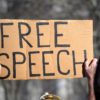
What Is The Current State Of Free Speech In The United States?
Free speech may be something that we take for granted in the United States, but…
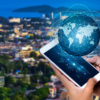
3 Ways To Stay Informed on the Latest Trends in Communications
Communications is a vast field with many disciplines under its umbrella. There are always new…
